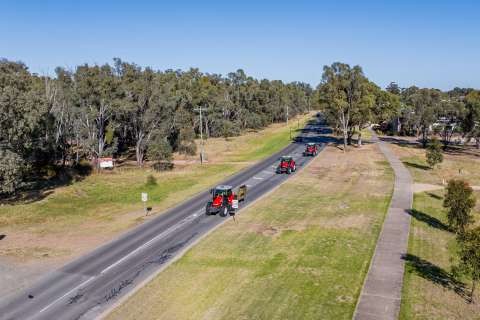Innovation and technology are behind five new tools to give nature a helping hand by helping eliminate predators, funded through the Provincial Growth Fund (PGF), Minister for Conservation Eugenie Sage and Parliamentary Under-Secretary for Regional Economic Development Fletcher Tabuteau announced today.
“The new tools will be trialled in large scale predator control projects funded by Predator Free 2050 Limited. They expand the range of options available for conservation managers, landholders, farmers and community organisations. They are part of a wider shift of effort from suppressing predators to eradicating them to boost the prospects for native wildlife,” said Eugenie Sage.
$3.5 million has been set aside out of a total $19.5 million investment from the PGF in Predator Free 2050 Limited to expand predator control in regional New Zealand and find products which reduce the need for repeated 1080 use.
“These products are a pivotal step towards a predator free future for New Zealand, driven by innovative and creative Kiwis that now have the funding they need to bring their products to market in regions around the country,” Fletcher Tabuteau said.
“Many of our regions are home to incredible natural taonga. Investment from the PGF is about taking a new approach to protecting these assets to bring tens of thousands of hectares of rural and forested land under effective predator control.”
“Once development and production are complete, these products will be tested in the large landscape scale projects being funded by Predator Free 2050 Limited in Taranaki, Hawke’s Bay, Otago and other regions,” Eugenie Sage said.
“Nature is the basis of regional economies and local identity, and I look forward to seeing the impact these new products have on enabling native wildlife to flourish.”
Predator Free 2050 Limited received 63 applications for new product developments and further design ideas are being assessed for funding. Out of $19.5 million of PGF funding granted to Predator Free 2050 Limited, a total of $6.5 million will be used for product development and $12m for new regional large landscape predator control projects.
These projects are part of the Government’s wider plan to back nature and restore the dawn chorus with the largest increase to the Department of Conservation’s budget in over a decade enabling the most widespread predator control ever.
Notes to editors:
Announcement details:
The Minister of Conservation Eugenie Sage alongside the Under-Secretary for Regional Economic Development Fletcher Tabuteau will be unveiling the innovative new trapping technology that will support New Zealand’s Predator Free 2050 vision and create jobs in regional New Zealand at Zealandia on Thursday morning.
WHEN: Thursday 21st November 8.30-9.30am
WHERE: Zealandia 53 Waiapu Rd, Karori, Wellington 6012.
Media Assets:
Preview videos of the new predator control products are available here.
Hammerforce Trap:
Boffa Miskell Long Life Lure:
NZ AutoTraps’ AT220:
ZIP’s Remove and Protect Tools:
ECT’s Spitfire:
B-Roll for broadcast (without graphics and music) is downloadable here.
Photos of product developers available here.
Background notes:
$19.5 million of PGF funding was announced for Predator Free 2050 Limited in February 2019. $3.5 million of this funding will be used to develop the following five products:
- The Spitfire Trap, re-engineered by Environment & Conservation Technologies Limited of Tauranga.
A liquid toxin delivery device designed for possums and stoats able to be left in the field for a year.
- The Hammerforce Trap, developed by Hammerforce Limited of Auckland.
An air-powered, multi-species trap which is self-resetting and allows for multiple kills per gas refill. Assembly is planned for Whangarei.
- The AT220 Auto Rebait Reset Trap, developed by NZ Autotraps Limited of Hamilton.
A rat and possum trap which mechanically resets 100 times and can be left unattended for up to 12 months. Assembly is planned for Whakatane.
- The Remove and Protect System, developed by Zero Invasive Predators Limited of Wellington.
A precision rat and stoat trap, automated lure dispenser, electronic transmitter and satellite box to remotely monitor and respond to predator reinvasions in remote areas.
- Long-life lures developed by Boffa Miskell, a nationwide company.
Low cost lures made of biodegradable plastic blocks which can remain attractive to predators for months. They will be manufactured and distributed from Rotorua and other regional centres.
The allocation of funds was coordinated with the Department of Conservation’s Tools to Market programme, to help optimise government investment in new tools for the Predator Free 2050 effort.








